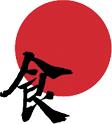Information
History
In addition to being Japan's staple food, rice is an integral part of Japanese culture and its identity. In fact, rice farming in Japan dates back over two thousand years. It is believed that Jinmu, the mythical first emperor of Japan, was sent from the heavens to transform Japan into a land of rice. Today, with over fifty five percent of Japan's farmland covered in lush green rice fields, it seems the emperor's mission has come to fruition.
Why Japanese Rice?
Though popular Japonica cultivars such as Koshihikari and Akitakomachi are now grown all over the world, the combination of Japan's geography, geologic features, and climate gives its rice an unparalleled taste. Through our extensive travels all over Japan, we've met farmers passionately dedicated to the art of growing rice. The care that they invest in their crops is something of a rarity in today's modern farming practices. Moreover, sustainable farming methods allow our farmers to consistently provide an excellent product year after year.
The unique characteristics of each cultivar, including amylose content, gelatinization temperature, flavor, taste, and texture are what distinguish it from another cultivar. Certain cutlivars, such as Oborozuki from Hokkaido, retain their elasticity and texture when cold, making them ideal for onigiri and sushi. The map below illustrates the regions of Japan from where we acquire our rice.

Cooking Recommendations
Though rice can be cooked over the stove, optimal results are achieved when using a dedicated rice cooker. Our rice cooker of choice is the Zojirushi Induction Heating Pressure Rice Cooker.

